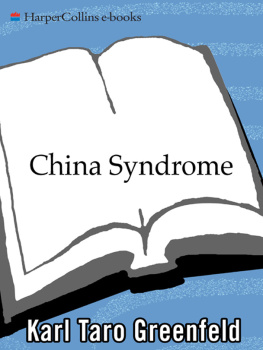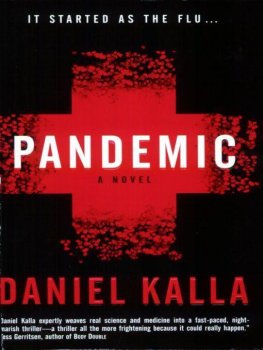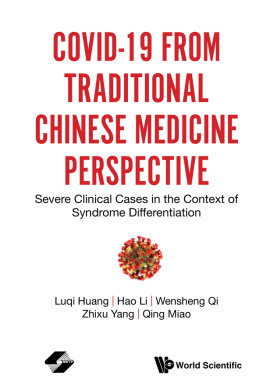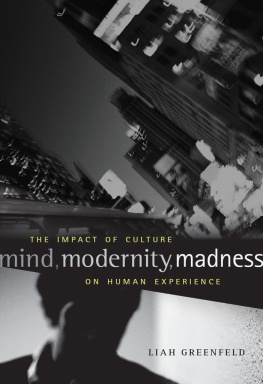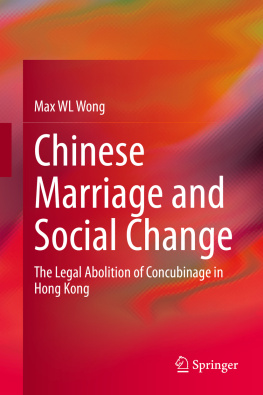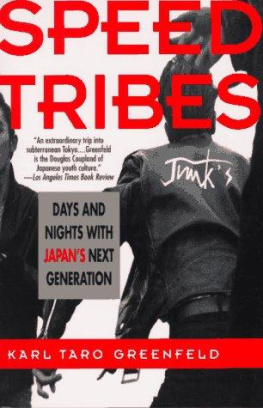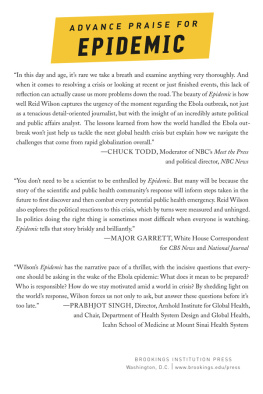Henk Bekedam Country Director, China, World Health Organization (WHO)
Rob Breiman Epidemiologist, formerly of the United States Centers for Disease Control and Prevention (CDC) and now with the International Center for Diarrheal Disease Research in Dhaka, Bangladesh
Cao Hong Chief Respiratory Specialist, Zhongshan Number Three Hospital
Margaret Chan Director of Health, Hong Kong
Danny Yang Chin Hanoi index patient
Deng Zide Director of Infectious Diseases at Guangzhou Number Three Hospital (also known as Sun Yat-sen Hospital)
Trevor Ellis Chief Veterinarian, Hong Kong Department of Agriculture, Fisheries, and Conservation
Fang Lin Earliest suspected SARS case in Shenzhen
Matthew Forney Bejing Bureau Chief, Time magazine
Keiji Fukuda Chief, Epidemiology and Surveillance Section, United States Centers for Disease Control and Prevention
Julie Gerberding Director, U.S. CDC
Guan Yi Assistant Professor, Department of Microbiology, University of Hong Kong, co-head of Pandemic Preparedness in Asia; smuggled samples from China
David Heymann Executive Director, Communicable Diseases, WHO
Hong Tao Senior Microbiologist at the Chinese Center for Disease Control and Prevention (CDC)s Institute of Virology
Hu Jintao Chief Secretary of the Communist Party and President of China
Huang Wenjie Chief of Respiratory Diseases at Guangzhou General Military Hospital
Huang Yong Time magazine correspondent in Beijing
Susan Jakes Time magazine correspondent in Beijing
Jiang Yanyong Physician at Beijing 301 Hospital and whistle-blower
Jiang Zemin Former Chief Secretary of the Communist Party and former President of China
Anna Kong Amoy Gardens resident
Thomas G. Ksiazek Senior Pathologist, U.S. CDC
Liu Jianlun Guangzhou nephrologist and Hong Kong index patient
James Maguire Epidemiologist, U.S. CDC
Hitoshi Oshitani Regional Advisor in Communicable Infectious Disease Surveillance and Response, Western Pacific Region, WHO
Malik Peiris Professor of Microbiology, University of Hong Kong, co-head of Pandemic Preparedness in Asia; led the team that isolated the virus
Mike Ryan Geneva-based WHO epidemiologist
Alan Schnur Coordinator for the Communicable Disease Surveillance and Response Department in China, for the WHO
Klaus Sthr Chief of the Global Influenza Programme at the WHO
Joseph Sung Chief of Gastroenterology and Hepatology, Prince of Wales Hospital
John Tam Chief of Pathology, Chinese University of Hong Kong
Carlo Urbani Hanoi-based epidemiologist and parasitologist, WHO
Rob Webster Pioneering expert in animal influenzas, and Guan Yi and Malik Peiriss mentor
Wen Jiabao Premier of China
Wu Yi Vice-Premier of China and highest-ranking woman in Chinese government
Xiao Zhenglun Deputy Director of the Guangzhou Institute of Respiratory Diseases and the leader of the Heyuan expedition
Xu Ruiheng Deputy Head, Guangdong CDC
E. K. Yeoh Secretary of Health, Welfare, and Food, Hong Kong
K. Y. Yuen Chairman, Department of Microbiology, University of Hong Kong
Sherif Zaki Senior Virologist, U.S. CDC
Zhang Wenkang Minister of Health, China
Zhong Nanshan Director, Guangzhou Institute of Respiratory Diseases and the most famous physican in China
YOU ARE HERE BECAUSE OF YOUR ANCESTORS IMMUNE SYSTEMS. IF any of themas tree-dwellers or hunter-gatherers on the plains of Africa, or as farmers or herders in Bronze Age villages, or during the great epidemics of civilized historyhad succumbed to any of the many microbes that ruthlessly cull humanity, then you would not be reading this right now. Somehow, because of better nutrition or greater intelligence or geographic circumstance or, most likely, just plain dumb luck, whatever ailments, diseases, and infections your predecessors were stricken with werent fatal, and those forebears successfully reproduced. The odds against that confluence of genetic good fortune are incalculable; statistically, a German Jew probably had a better chance of surviving the Holocaust.
But for those of us born into the antibiotic era, modern medicine and science have made infectious disease a remote threat. It seems like something that happens to very poor people very far away, in tropical villages or distant third-world cities. When there is an outbreak closer to home, like Lyme disease in Connecticut or mad cow in England, the media coverage and public reaction almost immediately verge on hysteria. We remain, on a basic, primordial level, terrified of disease. It is an unconscious fear, encoded into our DNA, and it surfaces whenever a nasty new microbe is alleged to be aloft, adrift, or, I suppose, afoot. Yet for all our vestigial fright, the vast majority of us have never lived through an infectious-disease outbreak. We are, of course, a historical aberration.
Those of us in the developed world today live remarkably disease-free lives, owing primarily to modern medicine, science, and better nutrition. Diseases thrive on starvation, and there are few going hungry in the lands of Carrefour, Park n Shop, and Gristedes. But trace your own family tree back a generation, two at the most, and immediately the impact of disease is apparent in genealogical dead endsgreat-uncles whose first wives died in childbirth, great-aunts whose tombstones read B .1920 D .1923. Whooping cough, measles, smallpox, plague, tuberculosis, dysentery, and influenza killed far more on the Atlantic, or Pacific, crossing or during covered-wagon journeys west than did storms, Indians, and frostbite combined. The immigrants song is one of sickness. Every familys journey is a history of triumph over disease.
My own father had polio as a University of Michigan senior in 1948. He was hospitalized for five months and told he might never walk again. Fortunately, he made a full recovery. But if he had never had polio, how different would the course of his life have been? He would have finished college on schedule, returned to New York six months earlier, and then perhaps not have been in residence at the McDowell Colony fifteen years later, when my mother attended on a painting fellowship. My father was among the last generation to be afflicted by the disease. Today, the WHO has plans to make polio the second virus to be eradicated after smallpox. Yet for my grandparents, polio was a persistent fear. There were outbreaks every summer. Parents warned their children to stay out of the water and sought to keep them from playing in muddy or dirty environments. Every cough or fever was a source of tremendous anxiety, the start of a nervous vigil for the telltale sore neck and backache that were early symptoms of the disease. Today, this seems almost a parody of overprotective parenting, but it was a typical rational expression of the fear of disease.

